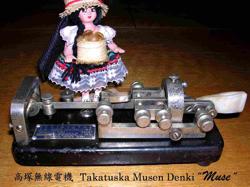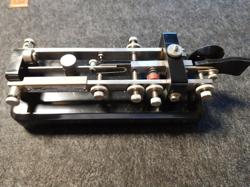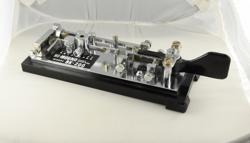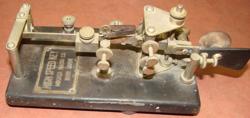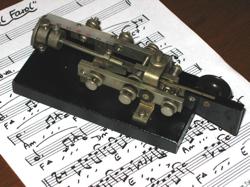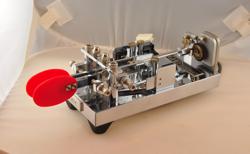Hi-Mound & Japanese Bugs
When people think of Japanese bugs, they of course think of Hi-Mound. Hi-Mound keys have been around for a long time, but people might be surprised to learn just how long the company has been making them.
The name Hi-Mound comes from the name of the founder, Takaitsu Takatsuka. His last name, Takatsuka, literally means "High Mound". Takatsuka actually started making telegraph instruments in 1938, before WW2. After the war he started Takatsuka Musen Denki (Takatsuka Radio Electric).
His first bug was called the Muse. In the 1950's he changed the name of the company to Dentsuseiki and finally in 1968 they became Hi-Mound. They still make telegraph keys today, although Mr. Takatsuka passed away several years ago.
There were a handful of other companies in Japan making bugs but not much is known about them and examples are pretty rare.
(Click on the pictures below to see larger versions of the photo)
Muse Bug (1947-1950)
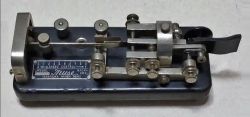 |
Takatsuka's first bug was called the Muse, sold under the name Takatsuka Musen Denki. They are quite rare, at least in the U.S.
Dentsuseiki BK-50 (1953-1968)
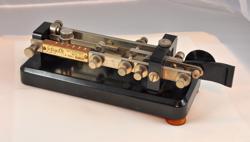 |
This was Takatsuka's first popular bug. Made by Dentsuseiki, it was sold under the name "Swallow". In the U.S. the Swallow key was offered by many resellers, such as Lafayette, Monarch, or Midland, who sometimes put their own nameplate on the key.
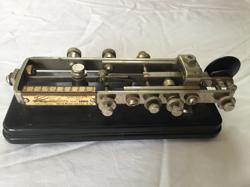 |
The first version of the BK-50 Swallow bug had an all-metal pivot frame and damper. The earliest versions also had the word Swallow incorrectly spelled "Swalow", with a single "L".
Hi-Mound BK-100 (1968-Present)
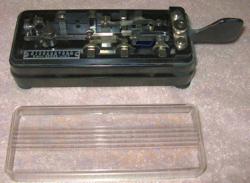 |
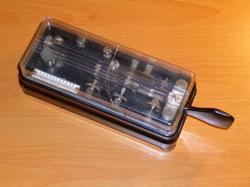 |
|---|
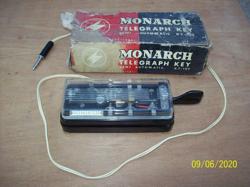 |
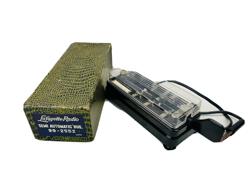 |
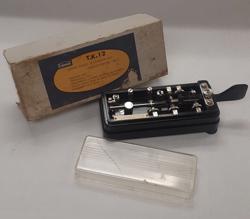 |
 |
 |
The most common Japanese bug by far. Surely every key collector owns one and nearly every ham has used one. The BK-100 is also called the "Coffin Bug" because of its rectangular shape and cover. Although they were all made in Japan, several companies sold the same key under a different brand name. On the bottom row are 4 of these "after market" keys, made by Monarch, Lafayette, Calrad, Midland and Eagle Products.
Hi-Mound BK-108
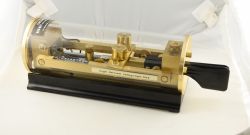 |
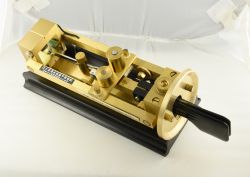 |
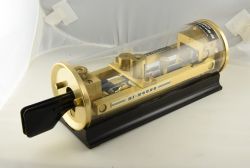 |
The Hi-Mound BK-108 was a limited production bug, with the keying mechanism enclosed in a clear plastic tube, similar to the HK-902 straight key.
Hi-Mound BK-200 (1999)
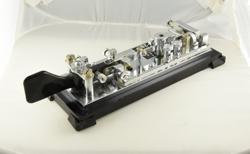 |
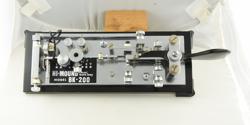 |
A small number of these were made in 1999. They are quite heavy so they won't move around on the table. Dot keying is accomplished by a magnetic relay at the end of the pendulum. Because of its length it's capable of sending very slow Morse Code, down to 12 words per minute !
Hi-Mound BK-200Z
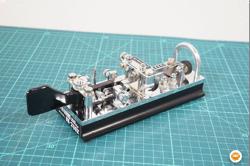 |
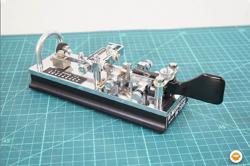 |
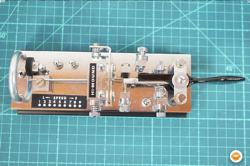 |
Similar to the BK-200 but without the magnetic relay at the end of the key.
Japanese Bug Made in Occupied Korea
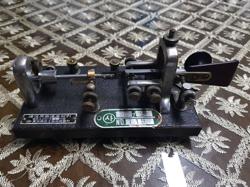 |
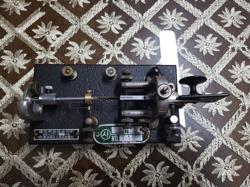 |
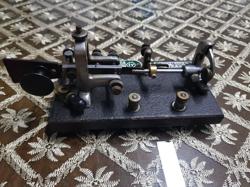 |
This bug was made by a Japanese company, Touyou Seimitsu in Japanese Occupied Korea in June 1924
Mikasa Bug
 |
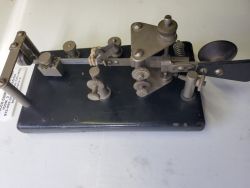 |
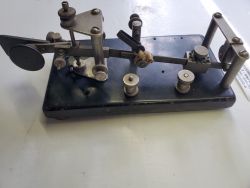 |
Made by Mikasa Radio Co, Kobe Japan. A Vibroplex Lightning Bug style key. Given that the nameplate is in English and the nickel plating, it was likely made after WW2.
Seven Star Scientific Researching Laboratory
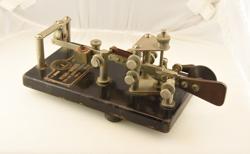 |
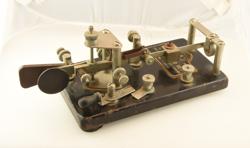 |
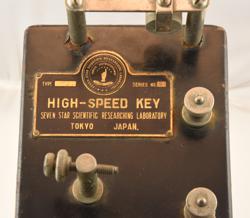 |
Another Lightning Bug style Key made by Seven Star Scientific Researching Laboratory, Tokyo. Please contact me if you have any information about this company.
Yamada Bug
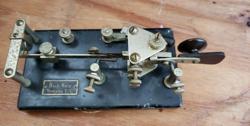 |
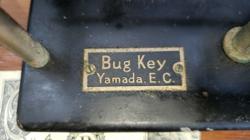 |
A Japanese Lightning Bug style key made by Yamada. E.C.
JRC Bug (1950's)
Made by JRC Radio Co.
Fuji Bug
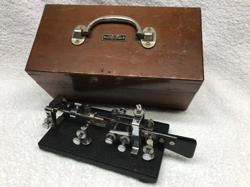 |
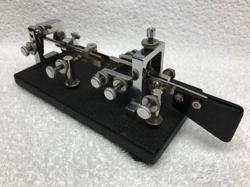 |
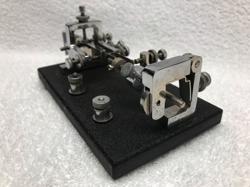 |
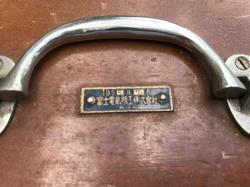 |
An interesting bug made by Fuji Denki, Osaka, in 1955. Note the unusual heavy damper asssembly.
DDK & REL Bugs
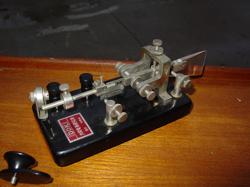 |
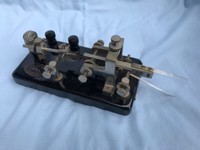 |
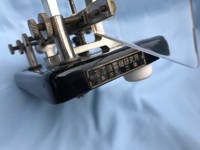 |
 |
Two virtually identical bugs. One is marked "DDK". The nameplate translates to "Daido Electric Laboratories, Tokyo, Setagaya District". The second key has an English nameplate stamped "Radio Electrical Laboratories" with a second nameplate at the front of the key stamped "Kohshuha Denki Kenkyujoh, Tokyo, Mitaka", which translates to "High Frequency Electric Laboratories, Tokyo, Mitaka City". Setagaya and Mitaka are located adjacent to each other, so it's likely the two keys were made at the same machine shop. The REL key was likely sold in the US, given that it has an English nameplate.
GHD Bugs
GHD Bugs (and paddles) are made by Toshihiko Ujiie, JA7GHD in Sendai Japan. He started making keys in the mid 1990's and is still making them today.
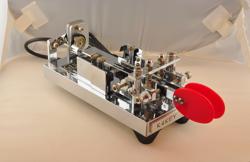 |
This is one of the earlier GHD bugs, the GD-131. It is a double-lever bug that operates without the use of mechanical contacts, instead using optical sensors to detect the keying. Very little force is required to move the lever; hence it can operate with a single small weight. Also, the damper assembly has a metal catch that, when hooked over the pendulum, converts the bug to an iambic keyer paddle !
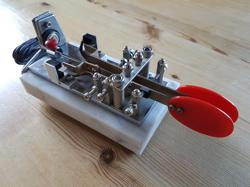 |
Another early GHD double lever optical bug. This one is mounted on a marble base and does not have the electronic keyer paddle option.
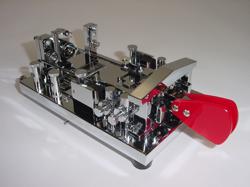 |
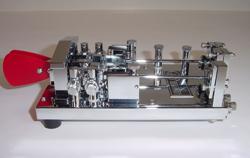 |
The GD-907, a double lever, fully automatic bug that operates like a Melehan Valiant. Like the GD-131, it also uses optical sensors instead of mechanical contacts for ultra smooth operation.
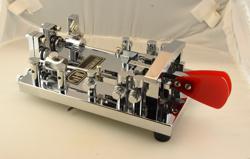 |
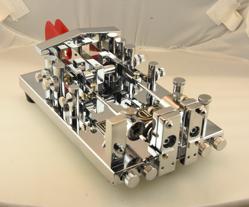 |
The GN-907, another double lever fully automatic bug like the GD-907, but this key uses regular mechanical contacts instead of optical sensors. Also a very smooth bug to operate.
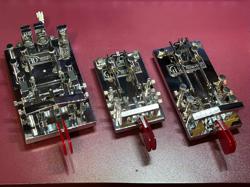 |
A picture of all 3 model of GHD automatic bugs. From left to right: GD907WS with optical contacts, GD209W, GD209FA
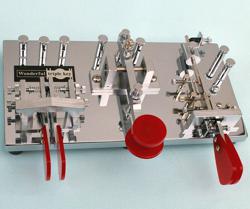 |
The GTB-736, a compound key that includes a bug, a straight key, and an iambic keyer paddle.
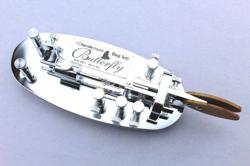 |
The GHD Butterfly Bug

